Copyright 2020 - 2021 irantour.tours all right reserved
Designed by Behsazanhost
Verjuy Mithra Temple
Verjuy Mithra Temple
Oldest Mithraist Temple
Architecture and art are the best forms of the emergence of the human attitude towards religious rituals and the importance of these rituals. In ancient Persia, one of the most important ritual foundations for forming space was the Mithraic beliefs. The significance of architectural design in Mithraic temples is presented in various periods of art and architecture in Iran and other parts of the globe depending on the complexity of the Mithraic mysteries. The art affected by Mithraism has transformed over time into a distinct meaning. Although astrology and the study of the celestial bodies have been a very important issue among the adepts, in general studies of Mithraic temples have always taken place with an emphasis on the interior architectural design of the Mithraeum, and unfortunately, The external environment of the temple and natural elements are lacking in previous studies. The purpose of the present study is to study and evaluate the appearance of the Mithraic temple on the basis of the available documents and the buildings identified to date. According to the research methods of explanatory and descriptive inquiry and by studying the ritual evidence and available papers and articles, and finally, by evaluating the appearance of the Mithraic temple, we came to the conclusion that despite the fundamental structural changes in Mithraic temples, from cave temples to underground Mithraeums in various parts of the world and over long periods of time, the general focus of the design of Mithraic temples is the nocturnal landscape.
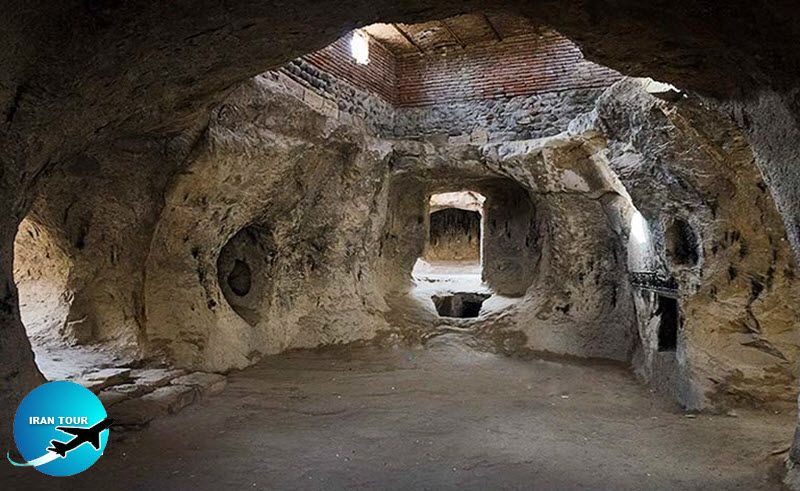 |
Mithraism, as one of the most widespread and effective religions in Persian territory, has left a deep impression on Persian art and civilization due to its geographic and historical reach, and it is worth exploring. 'be studied and researched. Before Jesus Christ, this religion was widespread in the western territories, as far as the north of Great Britain, and had many followers, leaving Mithraic remains everywhere. The curvature of cave temples is believed to be the primary place of worship for religion. Common patterns and elements are observed in all architectural aspects of Mithraic temples2 despite the geographic and historical scope, and these elements are later repeated in fire temples, churches, and even mosques. One could argue that the first spatial design basis of Iranian art is influenced by the ideas and beliefs of Mithraism.
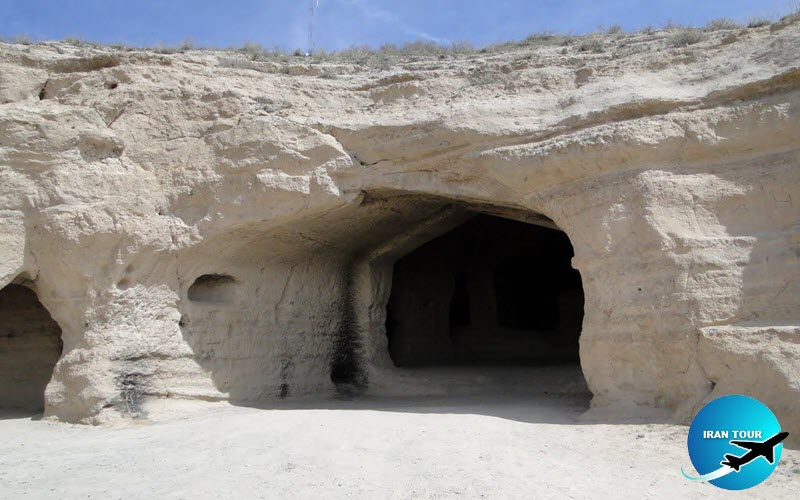 |
Rituals and beliefs of Mithraism
The Mithra religion, being a mystical doctrine, aims to awaken human consciousness and bring it closer to integrity and perfection. As a mentality, Mithraism focused on wisdom, knowledge, consciousness, and ontology. The followers of Mithras, no matter what time they lived, were overpowered in the knowledge of that time, and had an affection for music and dance. Such affection could also be seen in the scripts and poetry of Iranian artists and scholars of future generations. On the other hand, the followers of Mithras practiced hidden wisdom and were experts in prediction and prophecy, in rituals of sacrifice, especially in the annihilation of cows. Sacrifice or ceremonies, once took place at night when the sunlight was absent. Significant interest in and attention to astrology, planets, constellations, and galaxies were too strong that Roger Beck thinks in Mithraeum and Seating for Newcomers was decorated with constellations. In the tiles and decoration of the temples, the winter-summer equinox could be seen, probably showing the continuity of the outer world into the inner space. In addition to observing the night sky, the followers of Mithras deeply believed in the eternal permanence of the soul. They persisted in doing good deeds in persuading the soul's eternity and joining the eternal light. Ulansey believes that there is a symbolic relationship between ascending the mountain and reaching the caves which is a symbol of Mithras birthplace and the temple of doctrine by the adepts, and the symbolic image of the soul and reaching the upper levels of the sky, where the sun resides. Followers of the Mithras usually appeared with a mask in their religious rituals, which was likely a sign of their religious position in the Seven Stages of Mysticism. Although there are still secrets hidden in Mithraism, an interest in astrology, having respect for the sun, group rituals, singing sacred hymns, sacrifices in places away from the sunlight, drinking Haoma extract, seven steps of the Ayyaran path, having respect for previous goddesses like Anahita, and respect for the natural elements are known as their general rituals.
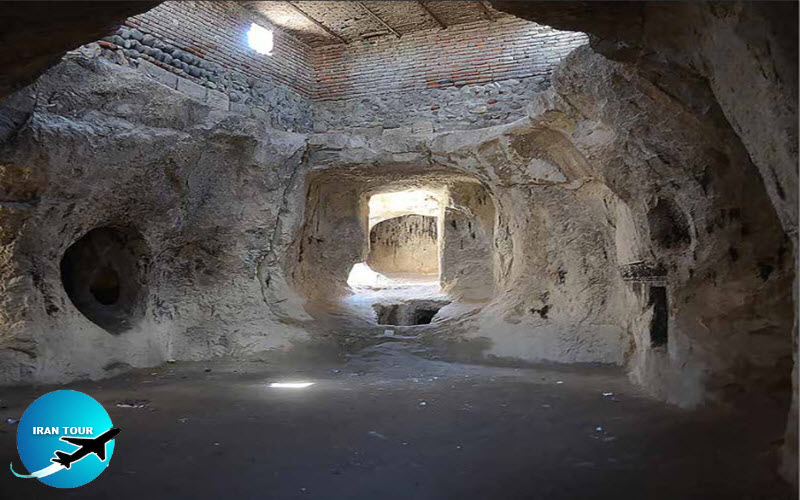 |
Architecture and appearance of Mithraeum
In the ancient world, religions were the dominant factor in determining the ideas, rituals, and nature of societies, played an important role in the formation and development of various types of arts in a way that in the world ancient, religion was a participant for life and the philosophy of art. Architecture, as a body that comes to life through mentality, has always borrowed the philosophy of time. Places of worship have always been influenced by gods and goddesses like the Moon, the Sun, the Mithras, and Anahita, who are gods of light, enlightenment, fertility, and holders of pure waters. These places were usually built next to springs and old trees. One of the characteristics of the Mithraic elements which is fully known to us and which is observed at all different levels of distribution is the interest and attention towards natural elements such as water, fire, celestial bodies, vegetation cover, and weather. If we study the Mithraic inscriptions, we realize that these temples are divided into two main groups: some use the specific term spectrum or the poetic phrase of the den, and others use the simple term temple or Aedes.
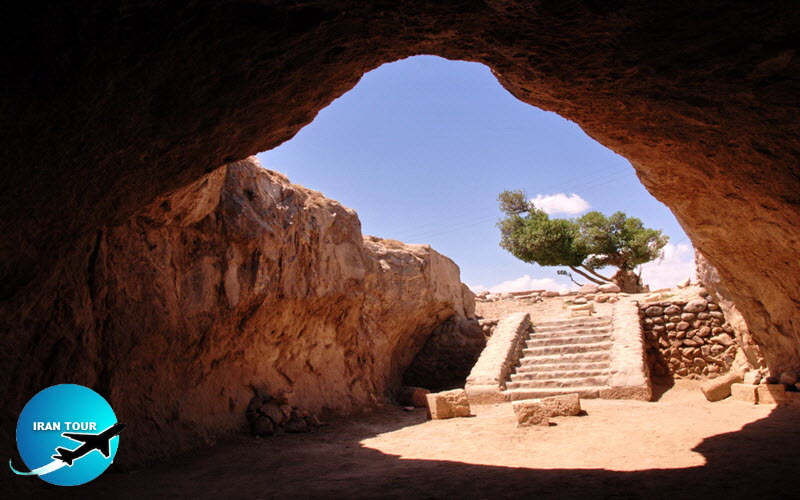 |
Verjuy Mithra Temple
Oldest Mithraist Temple
Maragheh is one of the old cities in the western part of Iran with a very ancient history. One of the most important historical documents of this city is the existence of the Mithraism Temple in the suburbs of this city. Followers of Mithraism built this temple during the Arsacid dynasty (248 BCE-224 CE) by cutting a huge schist stone on the ground and making it an entrance 5.40 meters wide. This building has undergone many changes throughout history and especially during the Islamic era. Among these cases, we can mention the Islamic decorations(Qur'anic inscriptions) created on the walls, which show that in the Islamic era, this place was used as a mosque or a place of worship for Muslims. At the end of the main hall, there is a two-step platform that reaches a small wooden door in the past. After entering, there is a 6-meter high circular room that the people of Verjuy know and remember as the sanctuary of Molla Masoum. The sanctuary, in stone, has beautiful vaulted rows that go around the wall.
What or Who is The Mehr
Mehr was called Mithra in Avesta and Old Persian. Also, in the Pahlavi language was called Mithr. In Avesta, Mehr considered as one of the creators of Ahura Mazda. Mithraism infiltrated Babylon by Iranian troops. This mentality was also introduced to Europe by Roman troops. In Europe, it was worshiped as a great god.
After the appearance of Zoroastrianism, Ahura Mazda became known as the only God, and other Aryan gods were considered Yazats or angels which actually resembled characters and the power of God and during the reign of the Parthian dynasty, it was the official religion of Iranians
Mithraism beliefs indicate that Mehr was born in a cave and therefore caves were considered very important in this religion and played an important role in the building of temples.
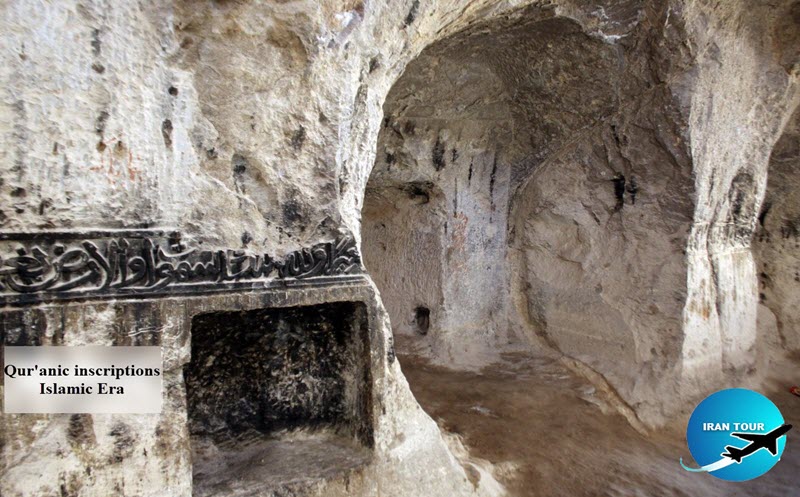 |
The caves, a place of worship for Mithraism
They believed that Mehr was born in a cave and therefore caves had an important role in this religion. Mithraism's followers usually performed their worship ceremonies in natural caves. The cave must have been located close to a spring, a river, or running water. They even tried very hard to locate a place near running water when building man-made caves just like natural caves. Due to such a style, the temples were eventually built underground.
 |
Importance of Altar
The most important part of a temple is its altar which usually is located at the end of the hall and included a small porch. Usually, this porch was built a little higher than the ground level and has a dome-shaped space. The walls were decorated with pictures of Mehr. The altar or Mehrab (Mithraeum) is a place that in pre-Islamic Iran and the Islamic period is seen as a window to God and the reality of this world. Two braziers were also placed on either side of the altar and statues were placed around it. Between the altar and the front door, there was a hallway like a hall and while the temple was built in the Roman style there were also long platforms on either side. The followers of Mithraism were generally seated on these platforms and tables and the blessed food was placed in front of them.
- Details
- Category: What to see in IRAN